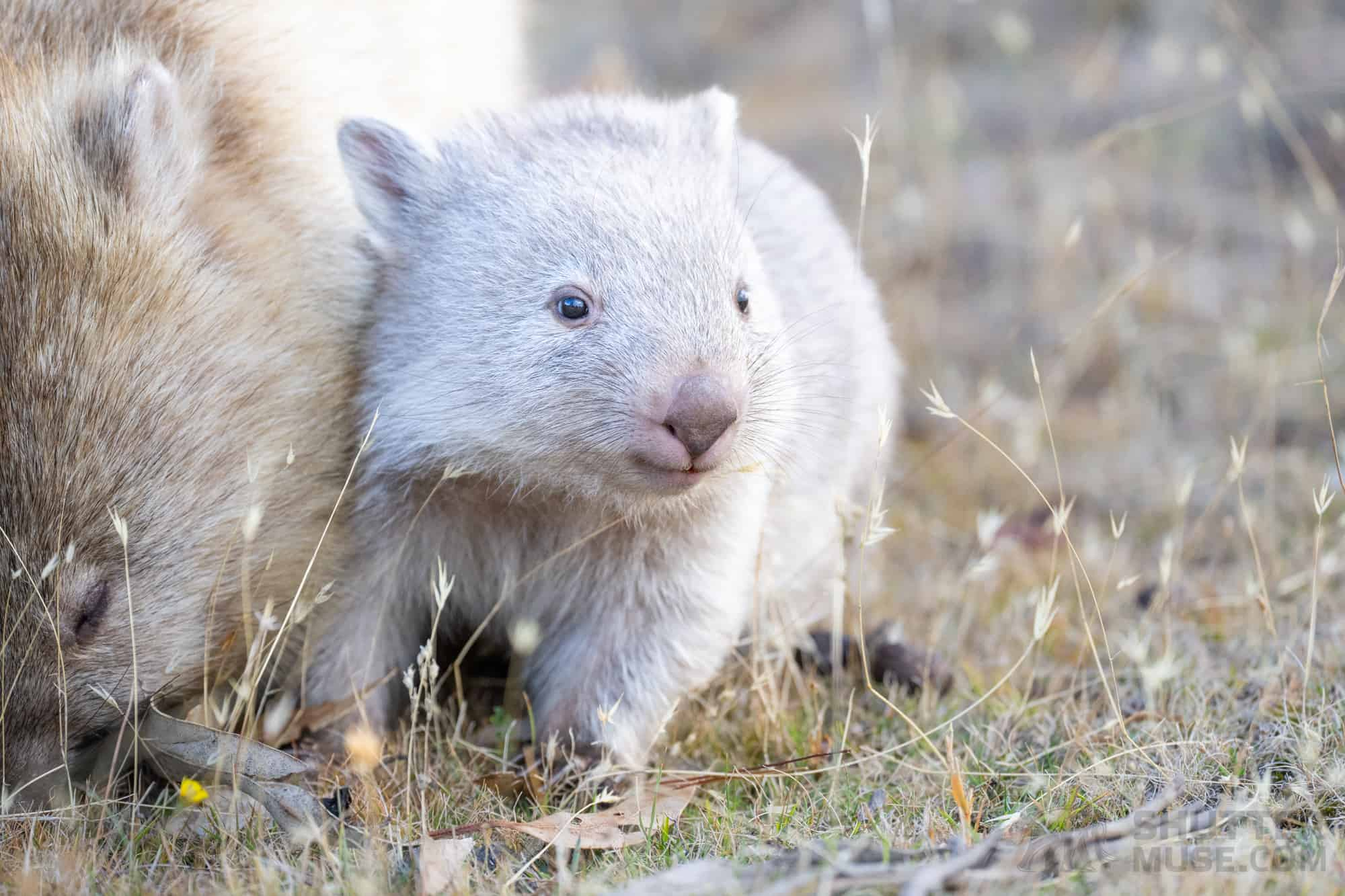Wombats, native to Australia, are intriguing marsupials that capture our attention with their unique features and behaviors. These are robust, burrow-dwelling marsupials known for their sturdy build and distinctive backward-facing pouch. Their short legs and strong claws make them exceptional diggers, enabling them to create extensive burrow systems in various terrains, from forests to grasslands.
Fun Facts About Wombats:
-
Adorable Appearance: Despite their stocky appearance, wombats exude charm with their button-like noses and small, round ears. Their fur can range in color from sandy brown to gray, providing excellent camouflage in their natural habitat.
-
Remarkable Burrow Architects: Wombats are adept excavators, creating intricate burrow networks. These burrows serve as their homes and provide refuge from predators and extreme weather conditions. Some burrows can extend up to 100 feet, showcasing their engineering prowess.
-
Unique Pouch Design: Wombats boast backward-facing pouches, an adaptation that prevents dirt from entering while they burrow. This distinctive feature sets them apart from other marsupials and highlights their specialization in subterranean living.
-
Impressive Speed: Despite their seemingly plodding gait, wombats can reach surprising speeds, particularly in short bursts. This agility aids them in navigating their surroundings and escaping potential threats.
-
Cubic Scat: One of the most peculiar features of wombats is their cubic-shaped scat. Wombat feces are cube-shaped and serve a crucial purpose – they don't roll away, marking territories effectively. The science behind this cubic shape remains a subject of fascination for researchers.
-
Herbivorous Diet: Wombats are strict herbivores, mainly feeding on grasses, roots, and bark. Their continuously growing incisors facilitate efficient grazing, contributing to the shaping of their environment.
-
Nocturnal Habits: Wombats are primarily nocturnal, exhibiting heightened activity during the night. Their keen sense of smell and hearing helps them navigate in low-light conditions and detect potential predators.
-
Social Structure: While wombats are generally solitary animals, they do engage in social interactions. Shared burrows often house multiple wombats and occasional gatherings near food sources provide opportunities for social encounters.
-
Conservation Challenges: Despite their robust nature, wombats face conservation challenges, including habitat loss and vehicle collisions. Efforts to protect their natural habitats and implement wildlife-friendly road-crossing measures are crucial for survival.
-
Cultural Significance: Wombats hold cultural significance in Aboriginal Australian folklore. They are depicted in Dreamtime stories, showcasing their role as characters in ancient narratives.
